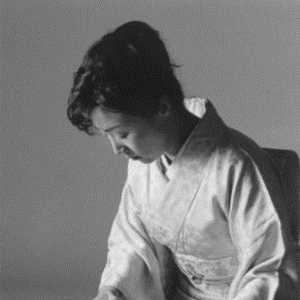
| Trackimage | Playbut | Trackname | Playbut | Trackname |
|---|---|---|---|---|
| 18612806 | Play | Midare | 09:34 Tools | |
| 18612807 | Play | Higashi kara | 13:44 Tools | |
| 18612808 | Play | Ame no Uta | 13:25 Tools | |
| 18612809 | Play | Rhapsody for twenty-string koto | 15:42 Tools | |
| 18612822 | Play | Shikyoku Ichiban | 15:41 Tools | |
| 18612813 | Play | Shikyoku Ichiban "Poeme I pour shakuhachi et koto" | 15:41 Tools | |
| 18612824 | Play | Rhapsody for twenty-string koto - Minoru Miki | 15:46 Tools | |
| 18612821 | Play | Higashi kara - From the East | 13:48 Tools | |
| 56946207 | Play | Rhapsody For Twenty-String Koto Solo | 01:46 Tools | |
| 18612820 | Play | Song-Poem of the Eastern Clouds | 04:55 Tools | |
| 56946208 | Play | Shikyoku Ichiban, "Poeme I pour shakuhachi et koto" - Matsum | 15:46 Tools | |
| 56946211 | Play | Rhapsody For 20-String Koto: Rhapsody For Twenty-String Koto | 05:25 Tools | |
| 18612812 | Play | Koto Coloring Book: Flaring Molten Orange | 01:13 Tools | |
| 18612810 | Play | Koto Coloring Book: Sliver of Silver | 01:25 Tools | |
| 18612814 | Play | Koto Coloring Book: White Hot | 01:46 Tools | |
| 18612818 | Play | Ame no Uta - Sato Yoko | 13:28 Tools | |
| 56946209 | Play | Higashi kara - Minoru Miki | 13:28 Tools | |
| 18612823 | Play | Ame no Uta - A Poem of the Rain | 13:28 Tools | |
| 18612811 | Play | Koto Coloring Book: A Patch of Purple | 01:40 Tools | |
| 18612829 | Play | Koto Coloring Book: Floating in Blue | 02:42 Tools | |
| 18612825 | Play | Koto Coloring Book: Black Hole | 03:50 Tools | |
| 18612815 | Play | Higashi kara (From the East) | 13:48 Tools | |
| 18612817 | Play | Ame no Uta (A Poem of the Rain) | 13:28 Tools | |
| 18612816 | Play | Shikyoku Ichiban - Poeme I pour shakuhachi et koto | 15:37 Tools | |
| 18612831 | Play | Koto Coloring Book: A Glistening Prism | 05:25 Tools | |
| 56946210 | Play | Rhapsody for twenty-string (koto solo) | 05:25 Tools | |
| 56946213 | Play | Shikyoku Ichiban, "Poeme I Pour Shakuhachi Et Koto" | 15:37 Tools | |
| 56946212 | Play | Rhapsody for 20-string koto solo | 05:25 Tools |

-
- 14,806
- plays
-
- 3,229
- listners
-
- 14806
- top track count
Reiko Kimura 木村玲子 was born in Nagano prefecture to a koto-playing mother, and started koto lessons at the age of six. Lessons in piano and solfege followed soon after. In 1971 she entered the Seiha Academy of Music in Tokyo, where she studied classical koto of the Ikuta school and jiuta shamisen. On graduation she continued her studies at the training course for performers of Japanese music established by NHK (Japan's public broadcasting network). In 1977 she joined Pro Musica Nipponia, and started her studies of the nijugen. As a member of the group, she travelled extensively throughout the world, and appeared as solo nijugen player in works by Miki with orchestras such as the Leipzig Gewandhaus and New York Philharmonic. She was awarded first prize at the 1979 Pan Musique Contemporary Music Contest. The first of her four solo recitals on the nijugen was held in 1988. She has travelled to countries in Europe, Asia and the Americas as a member of government and private-sponsored cultural missions and performance ensembles. Her fourth solo recital, an all–Miki program, was awarded the 1994 Arts Festival Award for most outstanding musician. Leaving Pro Musica Nipponia in 1997, she became a soloist with Miki's Orchestra Asia. A recital at the Smithsonian Institution in Washington D.C. in 1998 was organized by Music from Japan. Reiko Kimura's first recording on Celestial Harmonies is Music for Koto (13191-2) In notes to a recently released CD with Kimura Reiko's performances of several of Miki Minoru's works, Miki describes her as an "almost perfect nijugen performer." He acknowledges her and her colleague Nanae Yoshimura as the two leading soloists of the second generation, after the first great soloist, Keiko Nosaka. He has dedicated several of his works to Kimura, and featured her as instrumental soloist in his operas in performances in Europe and the United States. He characterizes her style as "powerful and clean," "possessed of a truly vital force." Read more on Last.fm. User-contributed text is available under the Creative Commons By-SA License; additional terms may apply.